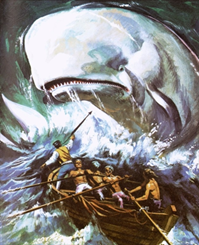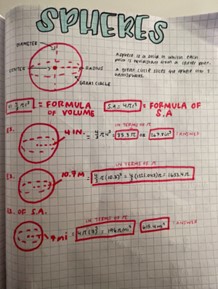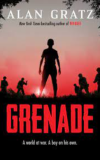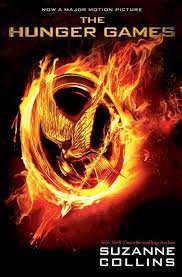
Disclaimer: It should be noted that this book was written in the 1850’s, for a very different audience. The English language was far different, and more formal. We are reviewing this by more modern standards, as that is the mindset most will enter this book with. And, though this is an undisputed classic, that does not give this invincibility to Meleville and his work. Do take our criticisms with a grain of salt, and do not let them spoil any enjoyment you may have from this book.
Moby Dick is a famous novel by Herman Melville. Though not initially popular in the 1850’s, it gained popularity as a book in the 1930’s, with deep themes of travel and vengeance. However, there is a caveat. It is boring to an ungodly degree. While the premise of the book has good potential, the execution was sub-par, turning the book into a long, boring slog.
The plot was quite simple, deserving of about half of the 456 page piece of media. It was about the vengeful Captain Ahab, attempting to capture Moby Dick, who had whipped its tail, and tore off his leg. Throughout the (three year) voyage, they caught a Right Whale, and a Sperm Whale. After each respective catch, Melevile detailed information about each whale, and how/why each of the whales were used for oil. Those were some of the most interesting chapters of the book. And therein lies the problem. Most chapters were long, boring tangents, unrelated to the plot.
Before delving deeper into the mush that was this novel, let us first speak of the (few and far between) good, entertaining chapters. One of the few chapters that provide the reader with an entertaining read is the chapter of the Pequod (the ship the novel takes place on) chasing after the whale itself, Moby Dick. These are some of the few chapters that keep the reader engaged and curious about what will happen next. Since it happens over three days, one will find it more entertaining. This especially goes for the second to last chapter, where Ahab famously goes after Moby Dick with his harpoon.
As was mentioned earlier, the two chapters that spoke of and chased after the Right Whale and Sperm Whale were also fascinating. It gives the reader a peek into the life of whaling, and what whales were hunted for. It shows how far we as a species have come in just a few centuries.
The last of the conventionally good chapters was actually near the beginning of the book. This was when Ahab gave a frankly remarkably well written piece of dialogue of his true intentions. He coldly states that his true goal is to find the White Whale, and to kill it once and for all. He also says that he will give $16 ($643.18 today) dollars to whoever would see the whale first.
While the writing style is old, it still holds up today, Herman Melville provides a lot of detail, perhaps to the detriment of the piece. Each chapter, despite being flowery with its language, was quite a pain to finish, and each page felt like a milestone, each acting as one whole book, in a vast collection.
Another issue with this novel is the tangents, touched upon earlier. Melville often goes on extended tangents, seemingly unrelated to the plot, often drawing some comparison to the story at hand.
To conclude, Moby Dick was a long, boring, yet well written piece of writing by Herman Meleville. There were sparks of greatness sprinkled throughout the book, but outside of that, it was a slow, boring mess.
“”Hast thou seen the white whale” will be forever in my head. Moby Dick scarred me for life“
Jackson Denton, the kid who quotes. . .
“But like a sunset, the greatness only last for so long”
Jackson Kuehn, the kid that never quoted. Until now

























